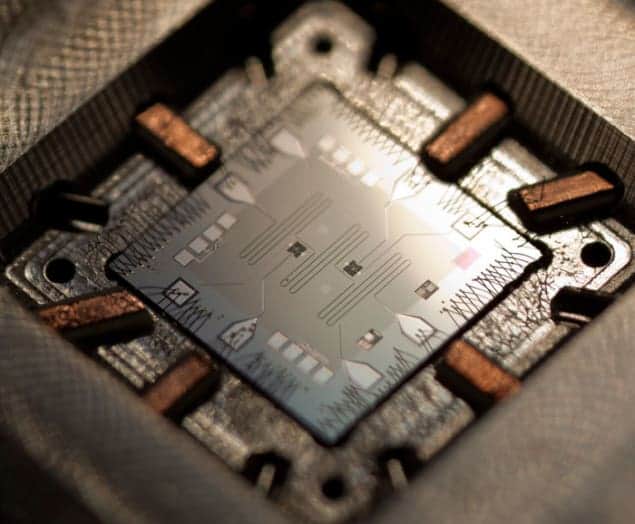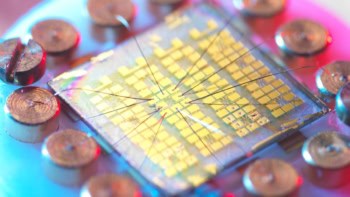
Physicists in California claim to be the first to implement a quantum version of the “Von Neumann” architecture found in personal computers. Based on superconducting circuits and integrated on a single chip, the new device has been used to perform two important quantum-computing algorithms. Conventional Von Neumann architecture includes a central processing unit (CPU) linked to a memory that holds both data and instructions.
Quantum computers, which exploit purely quantum phenomena such as superposition and entanglement, should in principle be able to outperform classical computers at certain tasks. However, building a practical quantum computer remains a challenge because the quantum states that such systems employ are difficult to control and are easily destroyed.
In implementing the Von Neumann architecture using superconducting quantum circuits, Matteo Mariantoni and colleagues at the University of California, Santa Barbara have taken an important step towards a working computer. Mariantoni told physicsworld.com that, to the best of his knowledge, he and his colleagues are the first to create such a quantum version of the architecture.
Marrying CPU and memory
The research team’s quantum CPU, or “quCPU”, comprises two superconducting “phase quantum bits” (qubits) connected by a superconducting microwave-resonator data bus. A phase qubit is a single Josephson junction, which consists of two pieces of superconducting material separated by a very thin insulating barrier. The logic levels – 0 and 1, for example – are defined by the phase difference between the electrodes of the junction.
Each qubit is connected to its own quantum random access memory (quRAM) element, which is made up of a superconducting resonator that stores quantum information in the form of trapped microwaves and a “zeroing register” – a two-level system that clears a qubit of information. The quRAM effectively acts like ordinary RAM that preserves the quantum nature – such as entanglement – of the information it stores.
The bus and the quRAM operate at fixed frequencies, whereas the working frequency of a qubit changes when special “z-pulses” are applied. When the frequency of a qubit matches that of a quRAM or the bus, then quantum information can be exchanged between the two.
Quantum operations
To perform an operation, Mariantoni’s team begins with the qubits “detuned” from the other components. Microwave pulses are then applied, which loads the system with quantum information, before z-pulses are applied to exchange information. Quantum operations are performed by the careful application of specific sequences of pulses.
In one experiment, the team performed the “quantum Fourier transform” operation with a process fidelity of 66%. In another experiment, Mariantoni and colleagues used the system to implement a three-qubit Toffoli OR phase gate with a 98% phase fidelity. Both of these operations are seen as essential for the operation of practical quantum computers.
“These figures of merit are very encouraging,” says Mariantoni. “However, numbers above 98% or even higher will be needed for a practical quantum computer to function.”
Long coherence times
Another important feature of the system is that the quantum memory can retain quantum information for much longer than the qubits. Such long “coherence times” are another practical requirement of a quantum computer. While the fidelity of the qubit states dropped below 20% after about 400 ns, the fidelity of the memories stayed above 40% for at least 1.5 µs.
The team is now working on increasing the number of quantum devices integrated on a single chip. According to Mariantoni, while boosting integration is fairly easy, operating such chips involves many more quantum operations. This means that the coherence times of the individual components must be boosted – something that is more of a challenge. The team is addressing this by finding ways of improving the quality of the dielectric and metallic materials used to make the devices.
The work is published in Science.



